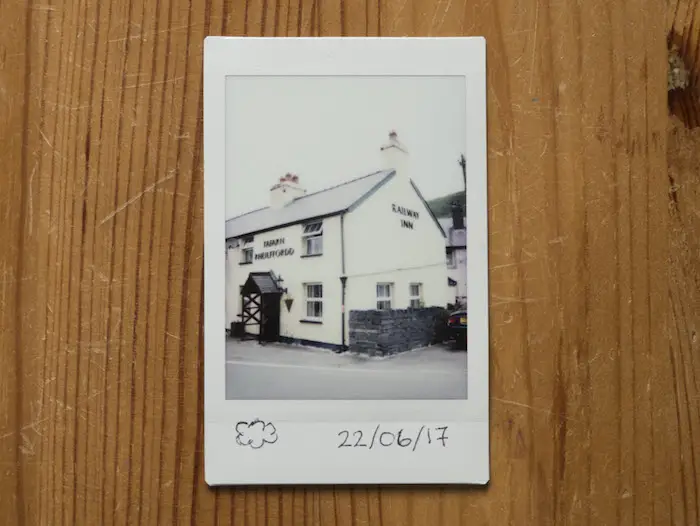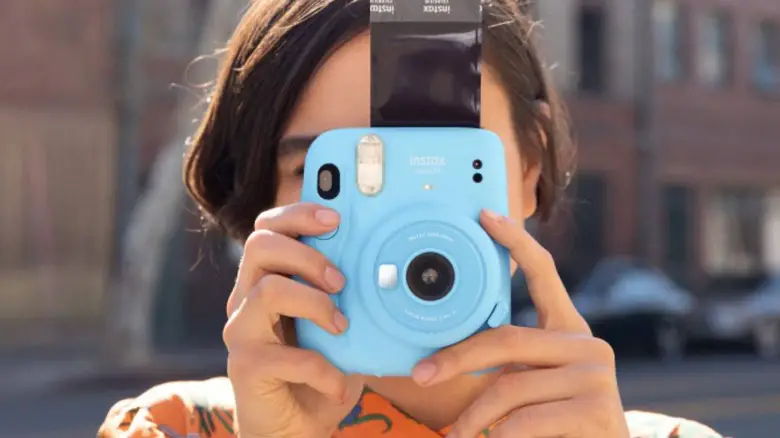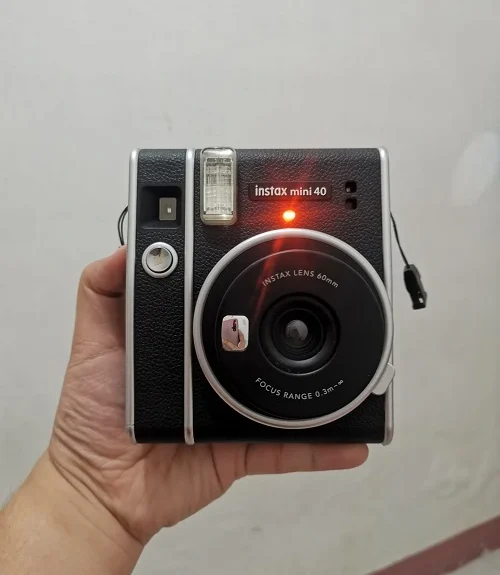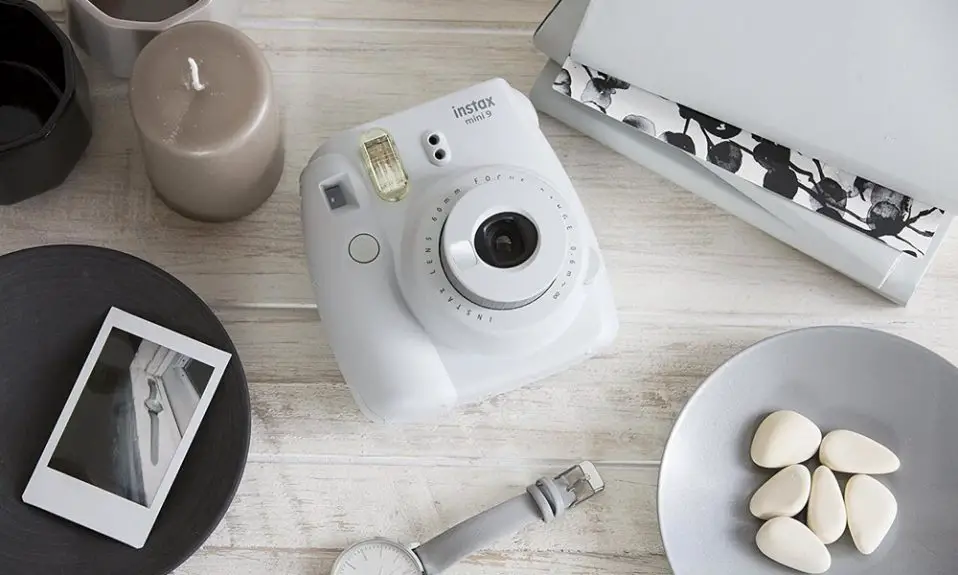Navigating the complexities of modern instant cameras can be challenging, especially when they malfunction. As a proud user of the Fujifilm Instax Mini Evo, I’ve relished the blend of digital convenience and analog charm it offers.
When the camera fails to operate correctly, it’s crucial to approach its troubleshooting systematically to get it back in working order.
I’ve encountered problems ranging from power issues to app connection difficulties.
For instance, a drained or fast-depleting battery can result in the camera not powering on at all.
To address this, checking the battery status on the LCD and ensuring the use of a proper USB-C charger is essential.
Operating the camera within its specified temperature range is also important to avoid functional irregularities.
Moreover, when app pairing issues arise, potential interference from other wireless devices should be considered.
As the camera relies on Bluetooth for connectivity, optimizing the environment by eliminating disruptive signals and re-attempting pairing close to the smartphone can often resolve these issues swiftly.
With a methodical approach and a keen eye for detail, solving these hitches can be straightforward, restoring the instant photography experience that the Fujifilm Instax Mini Evo is known for.
Contents
- Why is my Fujifilm Instax Mini Evo Not Working?
- Basic Troubleshooting
- Advanced Diagnostics
- Maintenance Tips
- Professional Repair and Support
- Frequently Asked Questions
- How do I troubleshoot my Instax Mini Evo if it’s not turning on?
- Why is my Instax Mini Evo not ejecting the film cover?
- What steps should I follow to reset my Instax Mini Evo when it is unresponsive?
- How can I fix issues with my Instax Mini Evo not charging?
- What is the process to pair the Instax Mini Evo with an iPhone?
- How can I transfer photos from my Instax Mini Evo to my phone without printing?
Why is my Fujifilm Instax Mini Evo Not Working?

When addressing malfunctions with the Fujifilm Instax Mini Evo, I recognize the importance of meticulously identifying the problem.
Doing so can save time and ensure appropriate solutions are deployed.
Common Symptoms
The first signs of an issue typically present as abnormal behavior in the camera’s functions. My battery might deplete quickly, or the camera may fail to power on at all. I could also notice the camera refusing to eject film, or experience errors with the lens not extending or retracting properly.
Power Problems
A frequent complaint involves power issues that could stem from the battery or charging process. Specifically, if my camera fails to turn on, I’ll check the battery status on the 3″ LCD display and ensure my charger and USB-C cable are appropriate and functional.
Lens Errors
When the lens fails to behave as expected, it’s indicative of a problem within the camera’s optical system. This could include the lens not extending upon startup or giving an error message if it’s stuck due to obstructions or a malfunction.
Film Ejection Issues
In instances where my camera does not eject film correctly, it suggests a potential complication in the film ejection mechanism. This can arise if the film is jammed inside or if there’s a failure in the motor that pushes the film out.
Screen Malfunctions
The camera’s LCD screen is paramount for operation and previewing images. Should it become unresponsive or display incorrectly, it indicates a significant issue. I’ll need to check for screen damage or look into potential firmware problems that can cause a misbehaving display.
Basic Troubleshooting
When your Fujifilm Instax Mini Evo is not functioning properly, basic troubleshooting steps are the first line of defense. I’ll guide you through checking the battery, ensuring your film cartridge is correctly installed, and resetting the camera.
Battery Inspection
My first step involves inspecting the battery life. If the Instax Mini Evo doesn’t power on or if the battery drains faster than normal, it’s essential to assess the battery status. You can check the battery status on the 3″ fixed LCD display. If the battery status is low, recharge it fully before use. Remember that rechargeable batteries have a limited lifespan and can wear out over time.
Film Cartridge Check
Next, I ensure that the film cartridge is properly installed. An improperly seated film cartridge can cause the camera to malfunction. Open the back compartment of your camera and check if the film cartridge is correctly inserted. If it’s not, reinsert it carefully, making sure it clicks into place.
Resetting the Camera
Finally, a camera reset can resolve various issues. To reset your Fujifilm Instax Mini Evo, you usually need to locate the reset button. For the specifics, refer to your user’s guide as the process may vary depending on the model and firmware version. A reset can help clear any errors or glitches that have occurred during use.
Advanced Diagnostics
In addressing non-functional Fujifilm Instax Mini Evo cameras, I move beyond basic troubleshooting to focus on firmware updates, error messages, and a thorough hardware inspection.
Firmware Updates
My first recommendation is always to ensure that your camera’s firmware is up to date. Firmware updates can resolve underlying software issues that may cause malfunction. Here’s how to check and update:
- Visit Fujifilm’s official website and navigate to the support section for your camera.
- Download the latest firmware version.
- Transfer the firmware to your camera’s memory card.
- Follow the on-screen instructions to update the firmware.
Error Messages Interpretation
Interpreting error messages accurately is crucial. When your Instax Mini Evo displays an error, I suggest:
- Refer to the user manual for a detailed explanation of error codes.
- Follow any recommended actions outlined by the manual.
- Record the error message if contacting customer support is necessary.
Hardware Inspection
Inspecting the hardware is a meticulous process. For a hardware inspection on your camera, I recommend the following:
- Check the battery holder for corrosion or debris.
- Ensure lens and ejection slot are clear from obstructions.
- Examine the camera for any signs of physical damage.
Use a magnifying glass and adequate lighting to thoroughly inspect small components. If any irregularities are found, it may be indicative of a need for professional repair.
Maintenance Tips
Maintaining your Fujifilm Instax Mini Evo is crucial for ensuring its longevity and optimal performance. I will cover essential maintenance steps including regular cleaning, proper film storage, and handling precautions.
Regular Cleaning
Lens: I use a soft, lint-free cloth to gently clean the lens, ensuring there are no fingerprints or dust that could affect photo quality.
Body: I wipe the camera body with a dry cloth to remove any dirt or debris; if necessary, I use a slightly damp cloth and then dry it thoroughly.
Film Ejection Slot: I check this regularly to ensure there are no obstructions that could cause a jam when the film is being ejected.
Proper Film Storage
Environment: I keep my unused films in a cool, dry place away from direct sunlight as high temperatures and humidity can damage the film.
Expiry Date: I always check the expiry date on the film packs to ensure they’re fresh as expired films can produce poor quality images.
Handling Precautions
Strap Use: I use the camera strap over my shoulder to prevent accidental drops and to keep the camera safe while I’m on the move.
Battery Care: I ensure the camera’s rechargeable battery is regularly charged and stored properly; if I’m not using the camera for an extended period, I remove the battery.
Professional Repair and Support
When my Fujifilm Instax Mini Evo is not functioning properly, I find it essential to explore professional repair and support options. This ensures that any issues are handled expertly and can prevent further damage to the camera.
Warranty Information
I always check the warranty first. The Fujifilm Instax Mini Evo comes with a limited warranty that typically covers manufacturing defects for one year from the date of purchase. It’s important to retain the purchase receipt or any other proof of purchase to validate the warranty.
Certified Repair Centers
In case my Instax Mini Evo needs professional attention, I prefer to take it to certified Fujifilm repair centers. These facilities employ technicians specifically trained to work on Fujifilm equipment. They use genuine parts for repairs, maintaining the quality and integrity of my camera.
Locations of Certified Repair Centers:
- North America
- Europe
- Asia
- Oceania
Customer Support Channels
If I need assistance with my Instax Mini Evo, there are several customer support channels available, including:
- Phone Support: I can call the dedicated help desk at 1-800-800-3854. Here, I select option #1 for general product support or option #2 if I’m seeking camera repair services.
- Email and Chat: Fujifilm provides email and live chat options for added convenience.
- Social Media: I can reach out through Fujifilm’s official social media accounts for quick responses to product queries or support needs.
Frequently Asked Questions
In this section, I address common issues and provide straightforward solutions to help you troubleshoot your Fujifilm Instax Mini Evo camera.
How do I troubleshoot my Instax Mini Evo if it’s not turning on?
If my Instax Mini Evo won’t turn on, I start by ensuring the battery is charged and properly installed. If the issue persists, checking for any visible signs of damage on the camera and the battery contacts is the next step. Sometimes a reset by removing and reinserting the battery can help.
Why is my Instax Mini Evo not ejecting the film cover?
When my Instax Mini Evo does not eject the film cover, it could be due to loading the film incorrectly or an obstruction inside the film compartment. I gently open the film door to check if the film is placed properly and ensure nothing is blocking the ejection mechanism.
What steps should I follow to reset my Instax Mini Evo when it is unresponsive?
To reset my unresponsive Instax Mini Evo, my first move is to turn the camera off and remove the battery for a few minutes. After reinserting the battery, I turn the camera on again. If there’s no response, I consider contacting Fujifilm’s support for further technical assistance.
How can I fix issues with my Instax Mini Evo not charging?
If I find my Instax Mini Evo not charging, I check the charging cable, port, and power source for any damage or dirt. I also ensure I’m charging the camera in an environment with a temperature range between 10°C to 35°C (50°F to 95°F) to promote optimal charging conditions.
What is the process to pair the Instax Mini Evo with an iPhone?
To pair my Instax Mini Evo with an iPhone, I download the Instax Mini Evo app and turn on my camera’s Bluetooth. Within the app, I select ‘Connect to Smartphone,’ which allows me to pair my devices by following the on-screen instructions.
How can I transfer photos from my Instax Mini Evo to my phone without printing?
To transfer photos without printing, I connect my Instax Mini Evo to my phone via Bluetooth and use the dedicated app. From the app, I select the images I want to transfer and follow the prompts to save them directly to my phone’s photo library.





